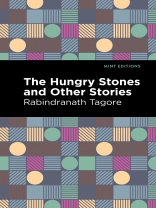The Hungry Stones and Other Stories (1916) is a collection of short stories by Rabindranath Tagore. Published following his ascension to international fame with the 1912 Nobel Prize in Literature, the collection contains some of Tagore’s most celebrated works of fiction. “Before a week had passed, the place began to exert a weird fascination upon me. It is difficult to describe or to induce people to believe; but I felt as if the whole house was like a living organism slowly and...
लेखक के बारे में
Rabindranath Tagore (1861-1941) was an Indian poet, composer, philosopher, and painter from Bengal. Born to a prominent Brahmo Samaj family, Tagore was raised mostl...
यह ईबुक खरीदें और 1 और मुफ़्त पाएं!
भाषा अंग्रेज़ी ● स्वरूप EPUB ● पेज 126 ● ISBN 9781513213927 ● फाइल का आकार 1.5 MB ● प्रकाशक West Margin Press ● शहर Berkeley ● देश US ● प्रकाशित 2021 ● डाउनलोड करने योग्य 24 महीने ● मुद्रा EUR ● आईडी 8183114 ● कॉपी सुरक्षा Adobe DRM
एक DRM सक्षम ईबुक रीडर की आवश्यकता है












